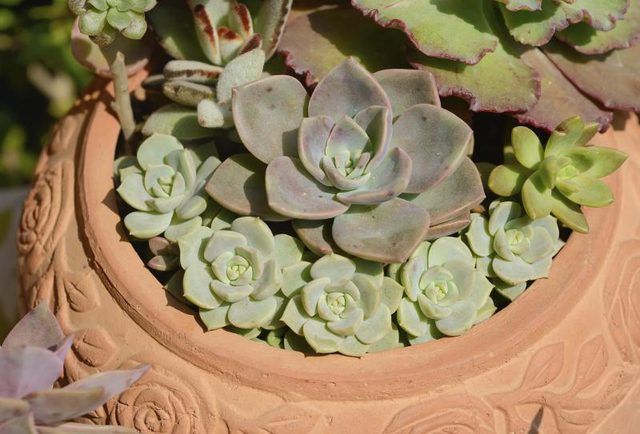Bulbs
Flower Basics
Flower Beds & Specialty Gardens
Flower Garden
Garden Furniture
Garden Gnomes
Garden Seeds
Garden Sheds
Garden Statues
Garden Tools & Supplies
Gardening Basics
Green & Organic
Groundcovers & Vines
Growing Annuals
Growing Basil
Growing Beans
Growing Berries
Growing Blueberries
Growing Cactus
Growing Corn
Growing Cotton
Growing Edibles
Growing Flowers
Growing Garlic
Growing Grapes
Growing Grass
Growing Herbs
Growing Jasmine
Growing Mint
Growing Mushrooms
Orchids
Growing Peanuts
Growing Perennials
Growing Plants
Growing Rosemary
Growing Roses
Growing Strawberries
Growing Sunflowers
Growing Thyme
Growing Tomatoes
Growing Tulips
Growing Vegetables
Herb Basics
Herb Garden
Indoor Growing
Landscaping Basics
Landscaping Patios
Landscaping Plants
Landscaping Shrubs
Landscaping Trees
Landscaping Walks & Pathways
Lawn Basics
Lawn Maintenance
Lawn Mowers
Lawn Ornaments
Lawn Planting
Lawn Tools
Outdoor Growing
Overall Landscape Planning
Pests, Weeds & Problems
Plant Basics
Rock Garden
Rose Garden
Shrubs
Soil
Specialty Gardens
Trees
Vegetable Garden
Yard Maintenance
How to Make a Dish Garden From Succulents
How to Make a Dish Garden From Succulents. When the outdoor world is winter-dreary, a succulent dish garden brings the desert's warmth and glow indoors. Succulents in a vast array of shapes and colors provide plenty of inspiration for creating distinctive dish garden combinations, and you may find stopping at single one impossible. Words of...

When the outdoor world is winter-dreary, a succulent dish garden brings the desert's warmth and glow indoors. Succulents in a vast array of shapes and colors provide plenty of inspiration for creating distinctive dish garden combinations, and you may find stopping at single one impossible. Words of warning: Although every cactus is a succulent, not all succulents are cactuses. Succulents need more water than their spiny relatives, so combining the two in a dish garden isn't wise.
Choose the Container
A succulent dish garden container should have drainage holes and be made of a porous material, such as unglazed terra cotta, that allows the growing medium to dry quickly. The best containers -- about 2 inches deep but wide enough for the plants' slowly spreading roots -- let succulents feel right at home. Picking a container compatible with different decorative schemes is a smart move because you may change your decor long before the plants need repotting.
Create a Design
For a striking but harmonious dish garden, choose succulents of different sizes, shapes and textures but complementary colors. Agave "Cornelius" (Agave "Cornelius"), for example, has sharply tapering, grayish-green leaves with creamy yellow margins and dark brown spines. At 18 inches tall, it pairs well with the 5-inch, yellow-centered, blue-green rosettes of Aeonium "Kiwi" (Aeonium haworthii "Kiwi"). Both grow as perennials in U.S. Department of Agriculture plant hardiness zones 9 through 11. Trailing stonecrop hybrid "Jet Beads" (x Sedeveria "Jet Beads," hardy in USDA zones 8 through 11), with 4- to 6-inch stems of bronze-tipped green leaves, contrasts in shape and size with both. Depending on how the dish garden is displayed, place taller plants in the center and shorter plants around the edge, if the garden is viewed from all sides. If only one side is displayed, place the taller plants at the back of the garden and the shorter plants in front. Check what's available at the nursery and what appeals to your eye.
Prepare the Container
Water-hoarding succulents grow best in porous, quickly draining medium that crumbles when you squeeze a moist handful. Donna Kuroda of the National Capital Cactus and Succulent Society recommends a formula of 2 parts potting soil to 1 part each of perlite and pumice. After washing the container in hot, soapy water, rinse, dry and fill it to within 1/4 inch of its rim with dry growing medium.
Plant the Succulents
Remove each succulent from its original container by inverting the pot and gently sliding the plant free. If any has been grown in peat, rinse its roots and let them dry. Arrange the plants on the surface of the medium until you're happy with their placement. Then scoop out a hole large enough to hold the largest succulent's root ball, set the plant in place and tamp the removed medium firmly around its roots. Repeat for the remaining plants, from the largest to the smallest.
Care for Your Creation
For a desert look and to keep the succulents' leaves and stems off the moist medium, finish the dish garden with a layer of coarse sand, gravel or pebbles. Water it immediately, let it drain and pour off excess water if necessary. Donít water again until the medium is dry. Set the garden in a spot getting four to six hours to of very strong -- but indirect -- sunlight each day. Rotate the garden slightly every two or three days so the plants won't lean toward the light, and mist it weekly with a fine water spray.